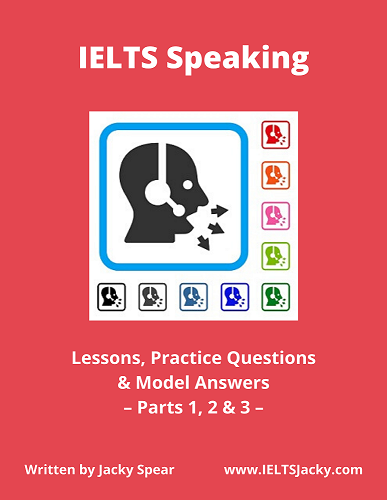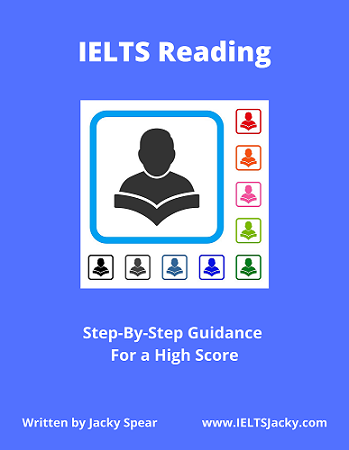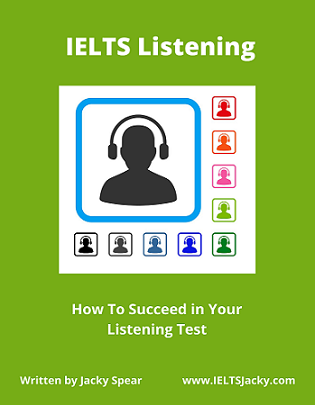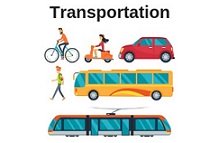IELTS
Speaking Sample
& Planning Strategy
On this page, we’re going to work on our second IELTS Speaking sample which I’ll be using to demonstrate Method 2 of our Part 2 planning strategies.
Being able to quickly and effectively plan your 2 minute talk in the 60 seconds allowed for this is crucial to developing a presentation that will show off the best of your language skills.
Remember that what you talk about
is not important, as long as you stick to the topic, but how you say it
is. However, if you’re fumbling around for what to say, your fluency and
coherence will be poor and you’ll be more likely to make simple errors because
of the pressure you’re under.
By having a good planning strategy prepared and practised, you’ll be ready to create a great talk that will demonstrate the full extent of your speaking ability.
If you haven’t already studied planning methods 1 & 3, you’ll find them here:
Method 2 – Brainstorming
For this second IELTS Speaking sample, I’m going to use another of the cue cards you first saw on the introductory page.
The introduction is important so check this page out if you haven’t read it yet. You’ll find it here:
IELTS Speaking Part 2 – 5 Reasons For a Low Score & How To Avoid Them
Want to watch & listen to this section?
Click on this video.
The cue card
Describe a place near water you have visited.
- You should say:
- where this place is
- what you did at this place
- who you went there with
and explain why you liked this place.
Sometime you’ll find that the bullet points don’t relate well to your experience of the topic or they aren’t what you want to say about it. When you read the talk below, you’ll see that this was the case for this candidate. Brainstorming is a particularly useful planning strategy to use in this situation, although it works well with any topic.
It’s a less structured approach than Method 1 so might also suit you better if you like to think more freely. Let’s go through it step by step.

Step 1 – First, read the topic sentence and bullet points. Then spend about 30 seconds jotting down the first things that come into your head. Single words or phrases are fine.
You’ll be given some paper to make your notes and will be able to refer to them during your 2 minute talk if you need to. You won’t be marked on what you write down.
Here are the notes the candidate made for this cue card:
Fremington Quay
busy port years ago
railway
all gone
fish from quay
now popular café with play area
walk from here & cycle
2 miles from home
stony beach along river
big sky
estuary birds when tide’s out
quiet on beach
field at end
so peaceful
walk dog
chases ball in field
favourite time evening
sun going down
no-one else there
black ibis
Step 2 – Spend the remainder of your 1 minute planning time organising your notes.
Do these two things:
a) Decide which to talk about (you don’t have to use them all).
b) Put them in a logical order.
Here are our sample notes organised into a more logical order.
- Fremington Quay
- 2 miles from home
- busy port years ago
- railway
- all gone
- now popular café with play area
- walk from here & cycle
- fish from quay
- walk dog
- stony beach along river
- quiet on beach
- so peaceful
- estuary birds when tide’s out
- black ibis
- field at end
- big sky
- no-one else there
- chases ball in field
- favourite time evening
- sun going down
What will
happen as you do this reordering is that your mind will be creating
the ‘story’ you’re about to tell. I’ll explain more about the technique of
storytelling when we come onto the next planning strategy I’m going to teach
you and our third IELTS Speaking sample.
You don’t have to do this reordering if it would be more valuable for you to spend the time developing your ideas. It will depend on how your brain works and how organised your thoughts need to be for your talk to flow naturally.

Step 3 – Give your talk
You are now ready to give your 2 minute talk. Try not to rely too much on your notes and refer to them only if you need a quick reminder of what you want to say.
Here's the complete talk created from the notes above. Can you see how it follows the notes?
IELTS Speaking Sample – 2
Describe a place near water you have visited.
I’m lucky enough to live by the coast so I’m close to many wonderful places near water. I’d like to tell you about my favourite. It’s called Fremington Quay and is only two miles from my home. Many years ago it was a busy port with a railway line and station but the ships and trains are all gone now.
About 20 years ago, the old railway station was turned into a café and it’s very popular with local people. Locals also park at Fremington Quay to go walking or cycling along the old railway line which has been made into a lovely footpath and cycle route called the Tarka Trail. Furthermore, the quayside is a great place to fish from and you can usually see at least two or three fishermen there whatever the weather.
However, it’s none of these things that draw me to Fremington Quay several times a week. I go there to walk my dog on the stony beach alongside the estuary. Not many people go this way. I can’t understand why as it’s a beautiful place, but I’m glad they don’t or it wouldn’t be so peaceful. There are many different sorts of seabirds on the shoreline, especially at low tide. I love to hear their cries and watch them digging about for food in the mud. At the moment there’s a black ibis feeding there, which is a rare sight around here. It’s a very exotic bird for the area.
About a quarter of a mile along the beach is a slope up to a hidden field and this is the most special place of all for me. The sky always seems so big when you stand in the middle of the field and the views all around are stunning. I hardly ever see anyone else there and it’s perfect for my dog to chase his ball around.
My favourite time to be there is in the evening when the sun’s beginning to go down. It spreads a golden trail on the water and casts a soft light on the surrounding countryside. It’s so beautiful. The tranquillity is unbelievable.
I do hope my field stays a bit of a secret place as it wouldn’t be the same if lots of people started going there. I’d still love it though.
It wouldn’t have mattered if the candidate had gone off track from their notes a bit, saying things in a slightly different order or adding something extra that they suddenly remembered that was appropriate to include. Your notes are just there to guide you. The greatest value is in the process of making them.
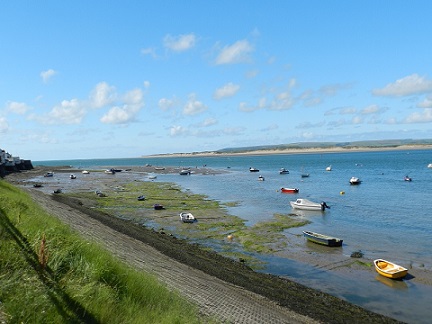
Preparing For Your Test
By using
the ‘brainstorming' method of planning, you’re never left panicking that you don’t know enough
about the topic to talk about it for 2 minutes. It activates your brain and gets
you straight down to making notes. Once you’ve organised your ideas, you’re ready
to go.
Now practise using this planning strategy yourself with these cue cards:
Describe a popular singer.
You should say:
- who the singer is
- what
kind of music they sing
- when
you first heard them
and explain why you think they are popular.
Describe a gift that you recently gave to someone.
You should say:
and explain why you chose that gift.
Describe a person you know who is kind.
You should say:
and explain why you think they are kind.
Describe a wild animal from your country.
You should say:
and explain how you feel about this animal.
Like this page?
Links To More IELTS Speaking Samples
Follow these links to two more planning strategies and Speaking samples:
Also visit this page for ideas on how to start your talk:
How To Begin a Part 2 Talk: Plus, top tips for gaining extra marks.
There are more Part 2 cue cards on the vocabulary topic pages. Each page also has a Speaking sample and examples of Part 1 & 3 questions and answers.
Vocabulary Topic Lists & IELTS Speaking Samples
Other Related Pages
IELTS Speaking Test: Know the format & understand what you’ll be assessed on. Discover the main reason for low scores & how to avoid this big mistake.
IELTS Speaking Part 1: 7 simple methods for developing your answers, with examples.
IELTS Speaking Part 2: Test format, understanding cue cards & 5 test mistakes to avoid.
IELTS Speaking Part 3: 6 common types of questions & how to answer them.
IELTS Speaking Topics: Discover 40+ common subject areas for the IELTS Speaking Test.
IELTS Speaking Practise Questions: Download 30 full mock tests (30 practise cards on 30 topics – 330 questions altogether).
IELTS Speaking Tips: 9 top tips to increase your chances of getting a high score
IELTS Speaking Practice: Massively improve your speaking skills by learning how to think in English.



